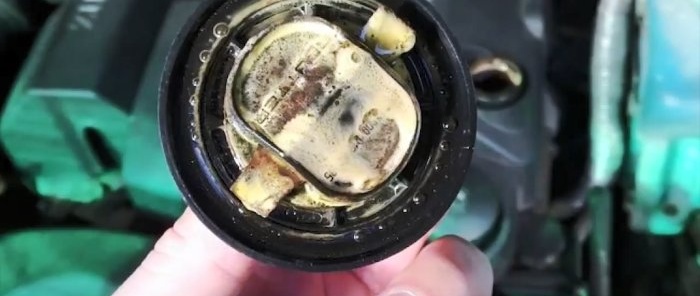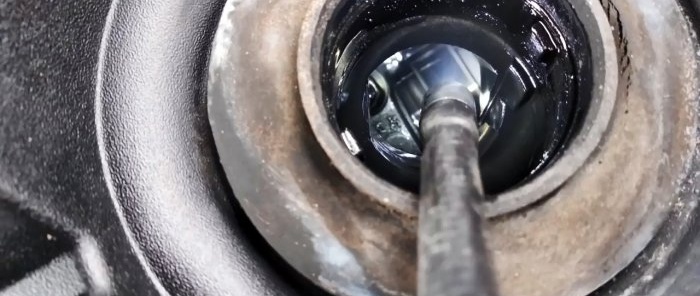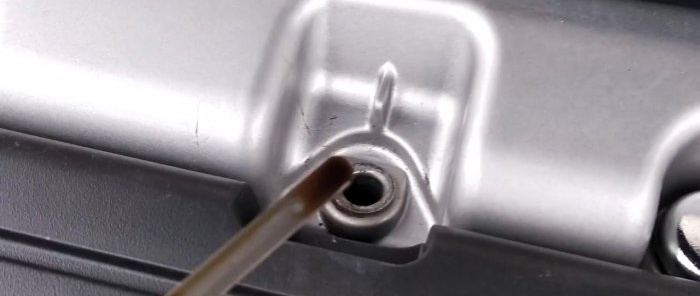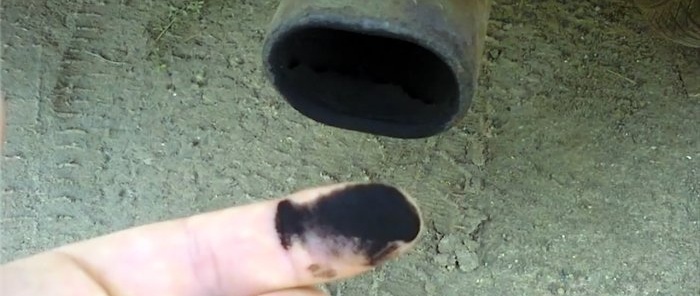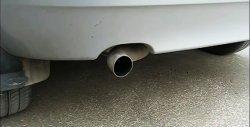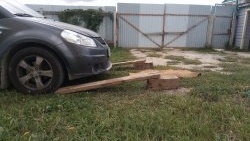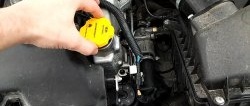Below are tips for ordinary buyers on how to check an engine without special knowledge, tools and instruments. They are based on the experience of a professional mechanic who has worked in car repair shops for many years. So, let's begin.
Oil filler neck
Unscrew and look under the oil filler cap. If a black coating is visible there, then this is accumulating carbon deposits, which is the first sign of increased oil consumption. If you find black clots under the lid, you should be wary. Most likely you have a problem motor.
The presence of a small amount of white plaque is normal. It appears simply from a temperature difference caused by a mixture of condensate and oil.
Block head from inside
The presence of carbon deposits in the form of dark brown varnish formations on the walls and camshaft should not be present. This may be due to one or more reasons:
- high mileage;
- irregular oil changes;
- use of counterfeit oil;
- harsh operating conditions.
On an engine with a really high mileage, but in good condition, light brown colors are acceptable, and even then in small quantities.
Presence of smoke from the oil filler neck when the engine is running
If there is no smoke, then it would be a good idea to see if the loose cap on the oil filler neck is jumping at low speeds on a warm engine. Normally, it should not move, except to sway slightly, and when you try to lift it, it will be sucked back.
Oil leakage and fogging in the area of the cylinder head
These signs in themselves are not critical, but oil output is caused by an increase in its consumption, which increases the pressure of crankcase gases, which break into the head and put pressure on the oil, which begins to leak from weak points.
Of course, you can replace the gasket, but if the oil leak is associated with its oil, then it will repeat in another weak spot. Oil consumption on an old engine of 1-1.5 liters per 1 thousand km is not the norm. If you ignore it, then oil consumption will begin to grow progressively after the point of no return. With such waste, the oil does not have time to clean itself. Burnt oil coats rings, valves, and oil passages with soot. The mobility of the rings decreases and the engine begins to consume even more oil.
Usually, before selling, sellers will wash visible areas with oil fogging. Therefore, it is necessary, armed with a flashlight and a mirror, and unscrewing the decorative cover, to look at the back side of the engine.
You should also inspect the area around the oil filler cap. If leaks of fresh oil are visible, then they appeared from frequent topping up. This means that the engine is eating oil.
Checking the oil level with a dipstick
If the oil level is at a minimum, then this is a sure sign that the engine is eating oil.You just need to measure the oil level 15 minutes after stopping the engine so that it all flows into the crankcase.
If the oil level exceeds the norm, you should also be alert. In this case, the overfilled level will squeeze out excess oil, but if the reason is related to the ingress of antifreeze, then this is already very dangerous. This means that there is not oil in the crankcase, but an emulsion, which can also be seen from the dipstick. Also in this case, oil stains will be visible in the antifreeze reservoir. Nothing good can be expected from an engine that has worked for some time on emulsion.
Emission analysis
When oil burns, the exhaust looks like gray, slightly bluish smoke. This cannot always be seen or felt by the nose due to the operation of the catalyst and particulate filter. But they can also be bypassed. If the engine is cold at night, then during startup the exhaust will initially be bluish, and then normal. This burns off the oil that has accumulated overnight.
On a warm engine, you need to hold 3000 rpm for 5 seconds, and then suddenly make several throttle changes to 4000-5000 rpm. If the engine consumes even a little oil, the bluish smoke will be clearly visible. If the engine actually eats oil, then after several revvings, blue smoke will simply pour out. The fact that the engine is eating a lot of oil is also indicated by a greasy black deposit in the exhaust pipe.

